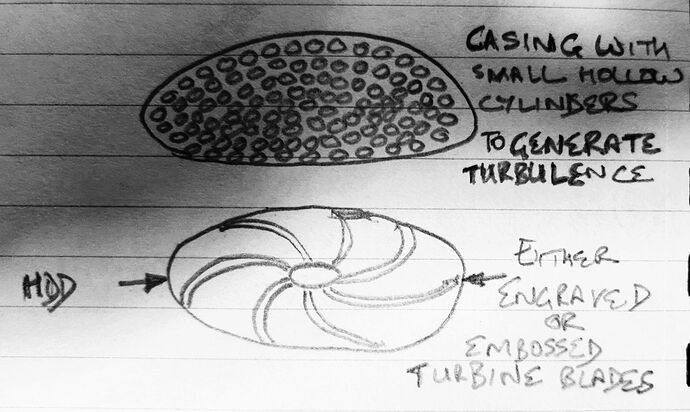The link is the discussion page for a new project launched within Maker’s Asylum, the maker space started in Mumbai which has now moved to Goa.
One of the efforts under way is to localise the Oxi-kit from the USA. Another is the IISc developed gas separator from Bengaluru. A third idea is electrolysis of water using handy electrical tools.
Considering the efforts of the HBCSE Maker Lab development of disk drive centrifuges, I’ve been thinking aloud about gas separation using digital-aided cutting and forming tools to make a suitable kind of gas centrifuge to isolate O² from the atmosphere.
Simplistically, centrifuging atmospheric gases will cause gases of different densities into laminar flow paths, with the densest on the outside. In practice, however, simple laminar flows need extremely high velocities to result in concentration values needed for actual isolation of any particular gas, which is both an engineering problem and one that demands extremely expensive materials and controls.
The solution is turbulence. This is the engineering solution of choice, as it results in desirable qualities of fractionation at lower velocities, lower pressures and the use of less expensive hardware.
The standard practice is to use a stacked series of circular profile rods in the path of the high velocity air. This causes the flow to break up around the profile, creating a clearly defined coma in the direction of flow, which can be tapped to extract the dense gas at high concentrations.
Normally, one would look for good pressure pumps etc, but a modern jugad can be fabricated using stacks of inexpensive hard disk drives, that typically are designed for about 7k rpm. A flat profile of turbine blades can be fitted to the motor, either by laser etching a plastic disk, or by 3D printing turbine blades (needs to be tested). The input needs to be dry air (drying with a filter will also eliminate dust). This borrows from an idea developed at HBCSE GLabs Maker Space for cheap centrifuges.
The dense gas at the periphery is bled off through gaps in the casing, which again, is either 3D printed or laser cut. This is fed to the next drive in the stack, while the waste gas, which will be rich in nitrogen and carbon dioxide, is led away from the centre. Just a thought, this is probably useful for cooling the whole system, so isn’t completely a waste.
In order to develop enough volume of gas handling to be useful for this application, multiple stacks of drives will be needed, which again is simplified by the use of CNC laser cutting or 3D printing of the blades and casing (the casing also incorporates the air/gas guides). The controls for the drivers are fairly simple, adaptations of readymade hard disk controllers in multiple PC on a chip devices, such as Raspberry Pi, or a standard controller like Arduino. This also needs some thinking, best done by regular Pi and Arduino users, to ensure effective cost management.
The concept can be tested using a single drive, naturally, but measuring the oxygen concentration at the output might need a specialised testing device, unless there’s a simpler way.
Since this gas is the input for the next drive in the series, a reasonable back of the envelope calculation can determine how many drives are needed to achieve the desired concentration in excess of 92%, and also the volume output, to decide how many such stacks are needed per concentrator.
